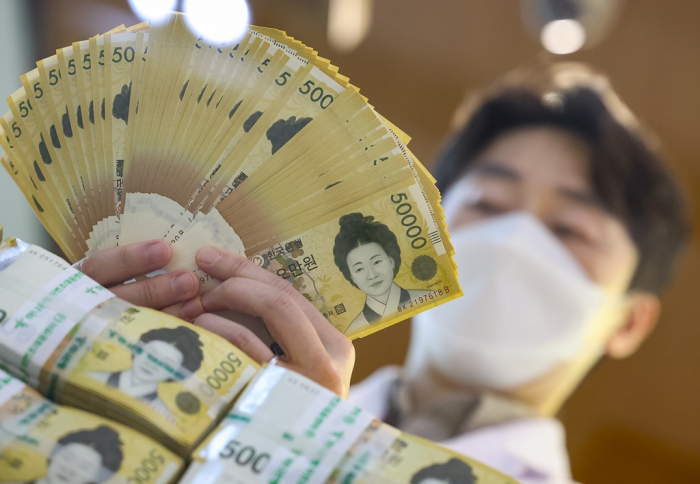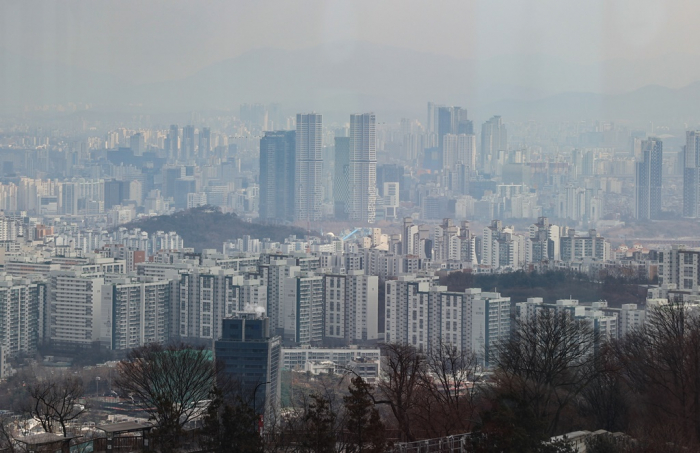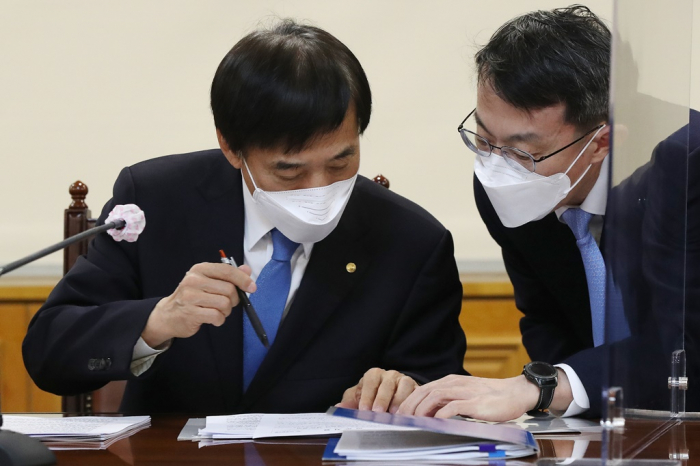Central banking
KoreaŌĆÖs record liquidity growth raises inflation, asset prices
Money supply increases 414 trillion won in 2021; liquidity is expected to grow further on extra budget, BOK
By Feb 17, 2022 (Gmt+09:00)
3
Min read
Most Read
S.Korea's LS Materials set to boost earnings ahead of IPO process


NPS to commit $1.1 billion to external managers in 2024


Samsung shifts to emergency mode with 6-day work week for executives


Samsung Heavy Industries succeeds autonomous vessel navigation


Korean battery maker SK On expects business turnaround in H2



South KoreaŌĆÖs money supply increased at the fastest pace in history last year, exceeding liquidity growth in the eurozone, which accelerated inflation in AsiaŌĆÖs fourth-largest economy and bolstered asset prices.
The countryŌĆÖs M2, a key gauge of the money supply, rose by a record 413.9 trillion won ($345.8 billion), or 12.9%, on-year to 3,613.7 trillion won in 2021, according to central bank data on Thursday.
M2 measures how much money is being circulated in the market. This includes cash, demand deposits, savings deposits, bank debentures and other short-term money that can easily be converted into cash.
The growth was higher than liquidity increases in the eurozone with a 7% rise, and other countries' such as Brazil, Sweden, Mexico, New Zealand and Russia. The US logged similar money supply growth of 12.9% as the Federal Reserve poured $120 billion into its reserves every month from January to November, keeping interest rates at zero.
ASSET PRICES, INFLATION
The Bank of Korea had held the base interest rate at an all-time low of 0.5%, boosting domestic liquidity, before it began raising the policy rate in August 2021. Low borrowing costs ramped up loans to invest in stocks and property markets, while households and smaller firms borrowed more for living expenses and operating costs due to COVID-19.
Household credit advanced 9.7% to 1,844.9 trillion won as of end-September 2021 with household debt to gross domestic product ratio at 106.5%, the highest since the first quarter of 2001 when the central bank started compiling such data.
In addition, the government spent 600 trillion won in total last year, up 50 trillion from 2020, to help households and smaller companies deal with COVID-19.
Increasing liquidity boosted asset markets. Retail investors bought a net 65.9 trillion won in stocks on the countryŌĆÖs main Kospi, while apartment prices in Seoul jumped 16.4%.

Consumer inflation accelerated to a decade high of 2.5% last year and soaring crude prices amid ongoing tensions over Ukraine and abundant liquidity are expected to speed up inflation to an 11-year high of around 3% in 2022.
A central bank policymaker said surging liquidity supply added to inflationary pressure.
ŌĆ£Considering the rapid growth in money supply in several countries, the recent surge in inflation is largely related to money moves,ŌĆØ said a member of the BOKŌĆÖs monetary policy board, according to minutes from the central bankŌĆÖs January meeting.
POLICY DILEMMA
Last month, the BOK raised interest rates back to a pre-pandemic level of 1.25%. The central bank is expected to ramp up the rate to up to 2% later this year as the Fed is predicted to increase borrowing costs and conduct quantitative tightening, in a process aimed at reducing the size of the central bankŌĆÖs balance sheet.
But South KoreaŌĆÖs government plans to inject more money into the economy with a supplementary budget of 14 trillion won proposed in January to support small companies and the self-employed. Lawmakers wanted the government to raise the extra spending to as much as 46 trillion won ahead of the presidential election on March 9.
Once the government meets their requests to pump up more money, inflationary pressure is expected to further accelerate.
ŌĆ£A significant fiscal expansion may add to inflationary pressure,ŌĆØ said a member of the BOKŌĆÖs monetary policy board in the central bankŌĆÖs Jan. 14 meeting when the monetary authority increased the base interest rate by 25 basis points to 1.25%.
The BOK is caught in a dilemma, however, as it is simultaneously trying to curb rising market interest rates resulting from increased government spending.

Governor Lee Ju-yeol pledged to buy more government bonds after purchasing 2 trillion won in treasury bonds on Feb. 7, raising liquidity. That compared with the FedŌĆÖs plan to reduce the balance sheet in the second half, cutting money supply.
The government urged the BOK to buy more government bonds.
ŌĆ£We plan to continue policy cooperation to implement necessary measures such as the BOKŌĆÖs additional purchases of government bonds in a timely manner,ŌĆØ said Second Vice Finance Minister Ahn Do-geol, addressing the recent treasury bond market.
Write to Ik-Hwan Kim at lovepen@hankyung.com
Jongwoo Cheon edited this article.
More to Read
-
 Central bankingBOKŌĆÖs mission impossible: To lower both inflation and govt bond yields
Central bankingBOKŌĆÖs mission impossible: To lower both inflation and govt bond yieldsFeb 15, 2022 (Gmt+09:00)
3 Min read -
 Corporate bondsKorea corporate borrowing costs jump to 8-year peaks
Corporate bondsKorea corporate borrowing costs jump to 8-year peaksFeb 10, 2022 (Gmt+09:00)
4 Min read -
 Treasury bondsKorea bond yields near four-year highs on extra budget
Treasury bondsKorea bond yields near four-year highs on extra budgetFeb 09, 2022 (Gmt+09:00)
3 Min read -
 Central bankingBOK restores interest rates to pre-pandemic level
Central bankingBOK restores interest rates to pre-pandemic levelJan 14, 2022 (Gmt+09:00)
3 Min read -
 Central bankingBank of Korea raises interest rates, signals further hikes
Central bankingBank of Korea raises interest rates, signals further hikesNov 25, 2021 (Gmt+09:00)
3 Min read -

Comment 0
LOG IN


